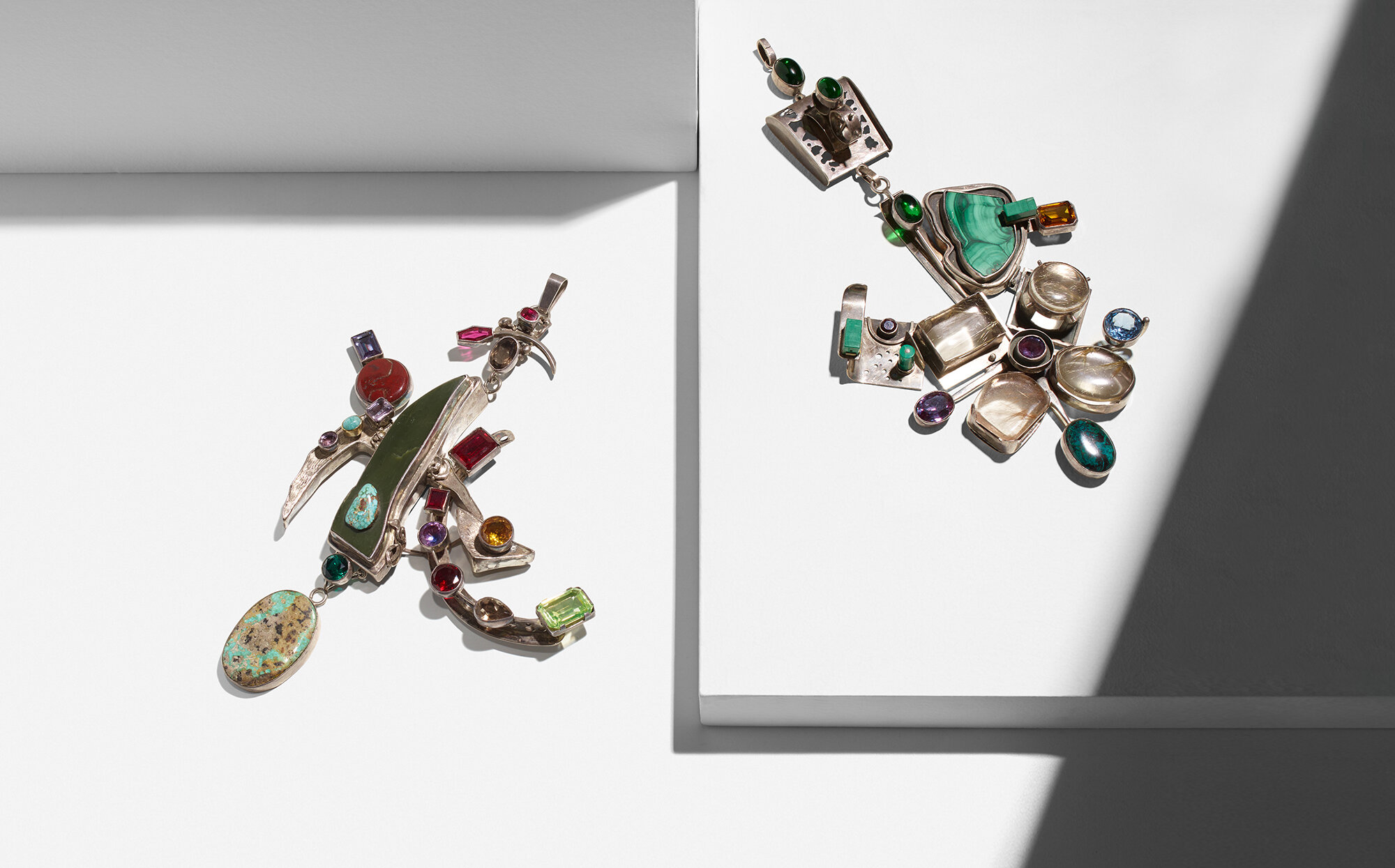165
165
GEM Montebello
Italy, c. 1965
acrylic, metal, leather cord 4¼ h × 4¾ w × ½ d in (11 × 12 × 1 cm)
Italy, c. 1965
acrylic, metal, leather cord 4¼ h × 4¾ w × ½ d in (11 × 12 × 1 cm)
estimate: $1,500–2,000
result: $2,125
follow artist
Pomodoro collaborated on this necklace with fashion designer Emanuel Ungaro.






















